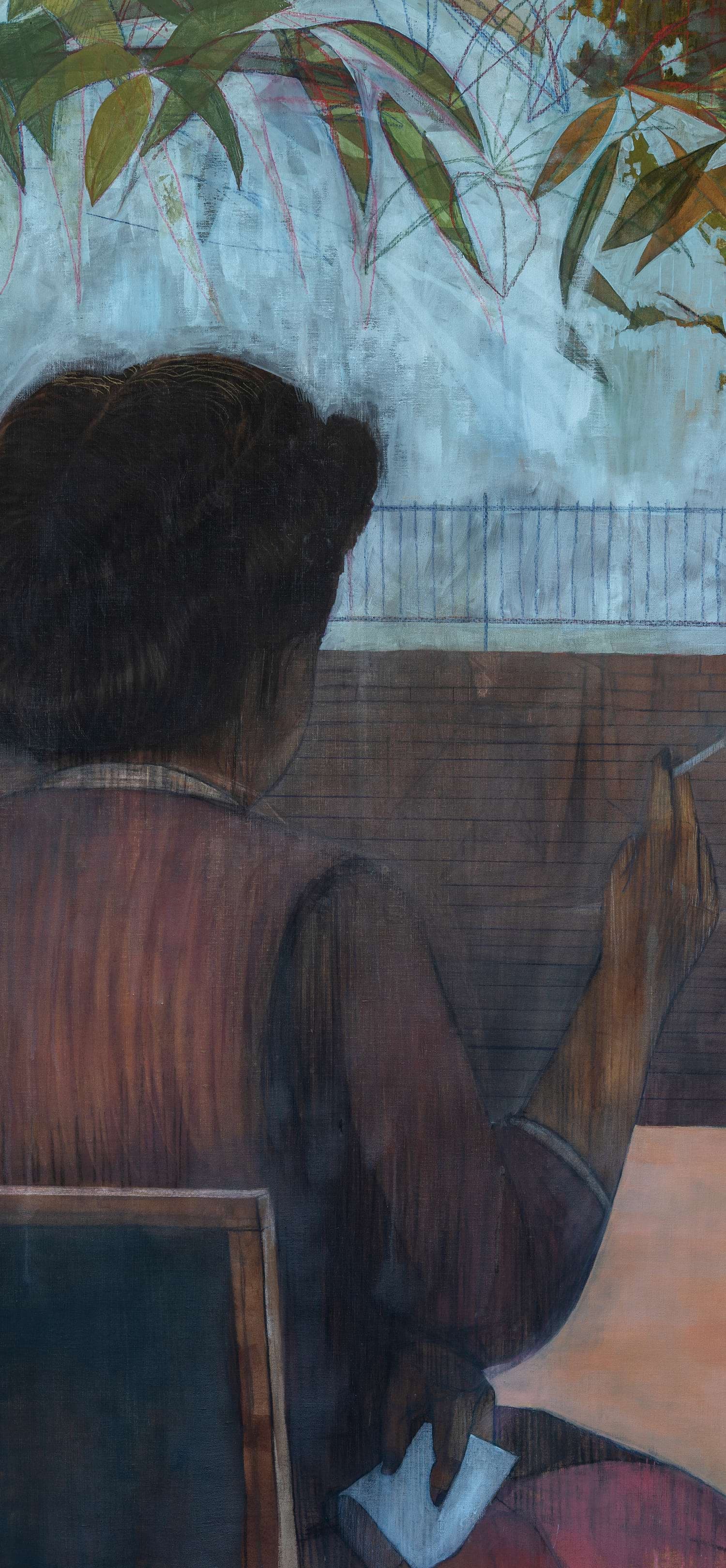
An epigraph is both an inscription and a beginning. It can be carved into stone, marking a site or a memorial, or placed at the threshold of a text, a fragment that frames what follows. Always partial, never the whole story, the epigraph signals a moment of passage. It opens a space of anticipation and draws the reader or viewer toward another way of seeing what lies ahead.
Epigraph gathers artists whose works inhabit such moments of passage. Their practices inscribe experience through memory, material, and myth, tracing the unstable boundaries between what has been and what might yet come into being. Each artist works from the fragment, from the residue of histories, architectures, and gestures, to assemble new worlds from what remains. Together they map an intricate field of reworlding: the poetic and political act of remaking the world through attention, transformation, and care.



Pamela Phatsimo Sunstrum, William Kentridge, and Maxwell Alexandre approach narrative as a space of transformation, reimagining how stories might hold multiplicity and motion. For more than two decades, Sunstrum has developed a visual mythology populated by recurring figures who traverse overlapping geographies, temporalities, and philosophies. Her central protagonist, a chimerical traveller, embodies hybridity and becoming, crossing the boundaries of myth, science, and speculative fiction. The narrative unfolds as both cosmic and political inquiry, asking what possibilities might emerge when history is recast through imagination. Sunstrum’s compositions move between the sacred and the rational, between ancestral time and projected futures, proposing the act of storytelling as a radical gesture of resistance. Kentridge’s practice echoes this restlessness of form and thought. His drawings are built through acts of erasure and revision, allowing process itself to become the subject. The marks he leaves behind – traces of removal, redrawing, and hesitation – constitute a visual record of thinking. Through these layered gestures, Kentridge transforms drawing into a meditation on persistence, resisting closure by keeping meaning alive in the act of becoming. Alexandre extends this sense of motion into a collective register. His paintings of Rio de Janeiro’s social and spiritual life transform the figure into a vessel of community, rhythm, and affirmation. Scenes of gathering, contemplation, and celebration unfold with chromatic intensity, reimagining visibility as a shared act of resistance and renewal. Together, Sunstrum, Kentridge, and Alexandre approach narrative not as resolution but as continuum, each locating the possibility of reworlding within the fluidity of becoming.

Featured Artworks
Create a Goodman Gallery account to view pricing of available artworks and access purchasing.
Clive van den Berg, Laura Lima, and Yinka Shonibare work through surface and atmosphere to reveal how histories are held in light, texture, and form. Van den Berg’s paintings dissolve landscape into air, transforming colour and gesture into carriers of memory. His clouds and mists evoke tenderness, mourning, and the persistence of desire, translating emotion into the very texture of paint. Lima extends this sensibility into sculptural form. Her wall-mounted works, drawn from the Brazilian folktale of Matinta Pereira, hover between object and apparition, woven and knotted into quiet, organic rhythms. Fixed to the wall, they appear to breathe against it, transforming the gallery into a living surface that records the passage of myth and touch. Shonibare introduces theatre and critique into this dialogue. His Hybrid Sculpture (Satyr on Stilts) reimagines a classical figure through the prism of cultural hybridity, its batik-painted body poised in precarious balance. The work captures both the grace and instability of identity shaped through exchange and inheritance. Alongside it, his quilt Nature Works (Copper and Cobalt Mine, DRC) transforms the landscape genre into a meditation on extraction and consequence. The stitched and patterned surface seduces with colour and craft even as it reveals the ecological and colonial violence embedded in the terrain it depicts. In dialogue, these artists turn surface into a threshold, a site where beauty and vulnerability coexist, and where material becomes an archive of emotional and historical tension.

Kapwani Kiwanga and Unathi Mkonto ground these more ephemeral gestures in a language of structure and material. In Crockery, Kiwanga reinterprets the “Broken Dishes” quilt pattern once used on the Underground Railroad as a coded signal of safe passage. Composed of cotton treated with pigment and Atlantic saltwater, the work translates the ocean’s archive of forced migration into a tactile surface of endurance. The salt crystallises within the fabric, embodying the tension between rupture and resilience, abstraction and testimony. Through this quiet transformation, Kiwanga repositions craft as both knowledge and care. Mkonto’s minimalist constructions, assembled from salvaged industrial materials, echo this same impulse through architectural form. His structures balance precision and openness, suggesting spaces built not for habitation but for reflection. They propose architecture as an emotional act, one that traces the fragile labour of rebuilding. Together, Kiwanga and Mkonto locate in material the possibility of repair, where form itself becomes an act of care and continuity.
Across these practices, Epigraph unfolds as a meditation on inscription and transformation. Each artist marks the uncertain surface of the present, working within states of flux, emergence, and renewal. Their works remind us that instability is not a failure of form but a condition of possibility. The fragment, the trace, and the gesture each become sites of potential, a way to imagine what might exist beyond loss or enclosure. In the context of our own moment, marked by displacement, ecological fragility, and the search for belonging, Epigraph offers not conclusions but beginnings. The works gathered here remind us that what is partial can still be generative, and that thresholds and edges are where new thought and new worlds take shape. They are inscriptions written in air, cloth, pigment, and steel, reminders that from within fracture and uncertainty, something else is always already forming.











